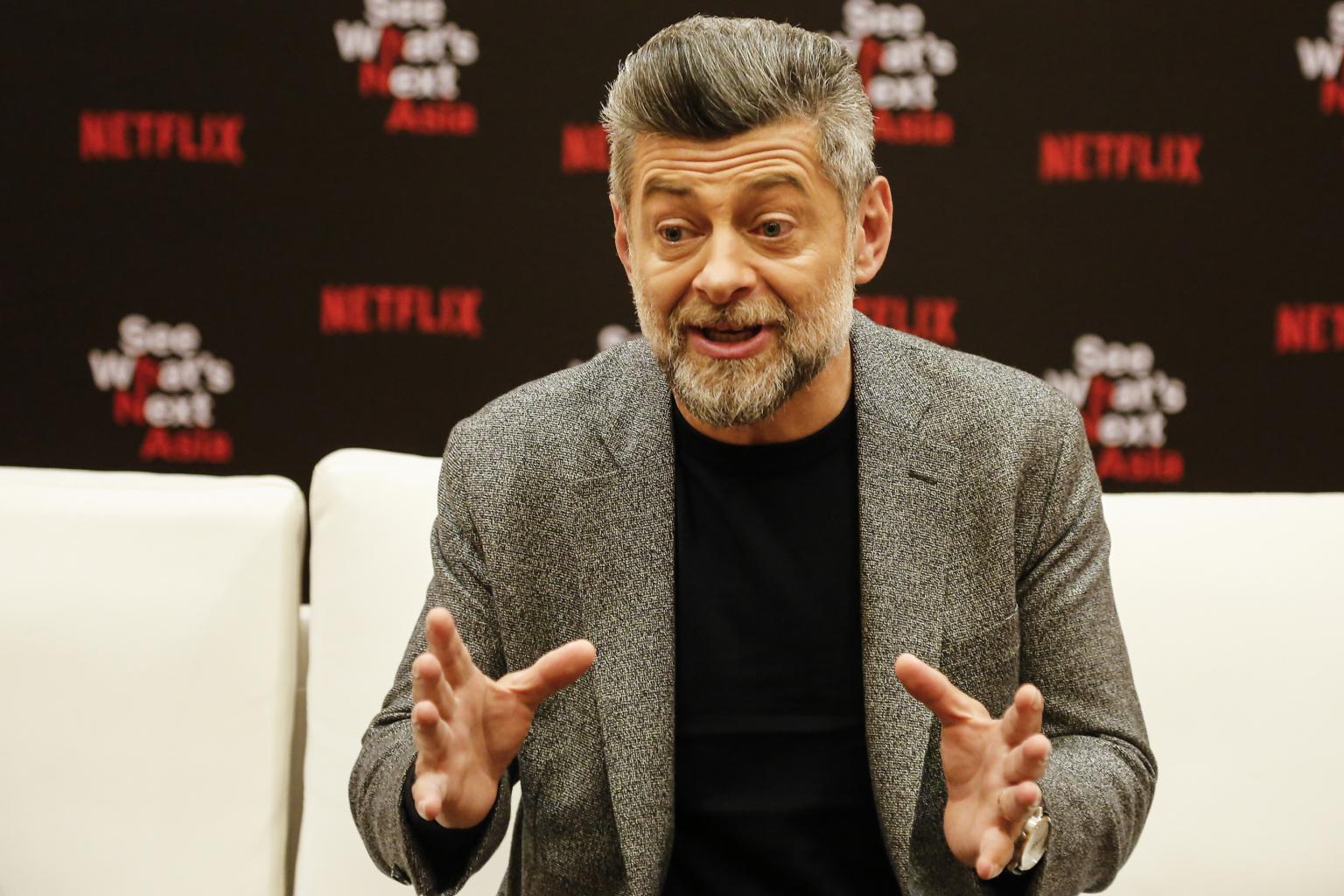Andy Serkis prefers motion capture to traditional animation
Sign up now: Get ST's newsletters delivered to your inbox

Rather than traditional animation, director Andy Serkis opted for motion capture performances for the film Mowgli: Legend Of The Jungle.
PHOTO: NETFLIX
Follow topic:
SINGAPORE - Andy Serkis might be a little late to the party with the film Mowgli: Legend Of The Jungle.
It comes out two years after Disney's The Jungle Book (2016), which, like the film Serkis directed, is based on the stories of English writer Rudyard Kipling.
That is as it has always been, he notes.
"Classic pieces of literature always bear retelling," he says of Kipling's Mowgli stories, which were written around the turn of the 20th century.
"Different actors and directors bring something to it that is fresh and new," adds Serkis, who before he took the director's chair, was best known as the actor whose movements were captured for computer-generated characters such as Gollum in the Lord Of The Rings trilogy (2001 to 2003) and Caesar in the Planet Of The Apes franchise (2011 to present).
The 54-year-old spoke at a media roundtable in Singapore late last year when he appeared at Netflix's See What's Next Asia press event.
Mowgli is now streaming on Netflix. It features the voices and motion capture performances of Christian Bale as Bagheera the panther, Cate Blanchett as Kaa the python and Benedict Cumberbatch as Shere Khan the tiger. Serkis, besides directing the film, appears as Baloo the bear. Indian-American actor Rohan Chand is Mowgli, a feral child raised by wolves.
What sets his version apart from the two famous Disney animated adaptations (1967 and 2016) is that he puts the character of Mowgli front and centre.
The tone is also heavier, compared with Disney's upbeat and more music-oriented takes.
"The stories were written around the 1890s and it is a story about India. It is culturally specific. It is about a young boy searching for his identity... There are real consequences and there is no automatic happy ending," Serkis says.
Kipling believed that superior Western cultures ought to reign over inferior Asian and African ones, an attitude that permeates some of his writing.
Serkis says he is aware of Kipling's notions about race and culture.
"He was a new voice for the working classes, but he was later on in his life seen as borderline racist and imperialist," he says,
His film addresses Kipling's baggage, but "not in an overtly political way".
'We focus on aspects like class, otherness, the different tribes vying for supremacy and colonialism, how the jungle is being taken over by man. I don't think any other version has gone near dealing with those things," he says.
Rather than use traditional animation, Serkis opted for motion capture performances. It entails having actors perform their roles as they would in a live-action film while wearing suits that allow expressions to be digitised and then accurately overlaid on fantasy creatures.
He prefers this to pure animation, which requires actors to only use their voices, often in isolation in a recording studio. Character expressions are then interpreted by the director and animation team.
For Serkis, the priority was to catch the sparks that fly when actors are performing together in the same room.
"Drama is about what happens between two actors. To have the actors there playing those parts - it is a different level of connection compared to animation," he says.
Mowgli is now streaming on Netflix.

